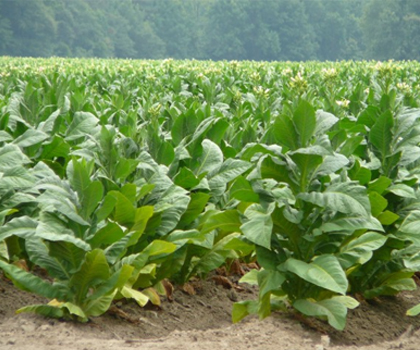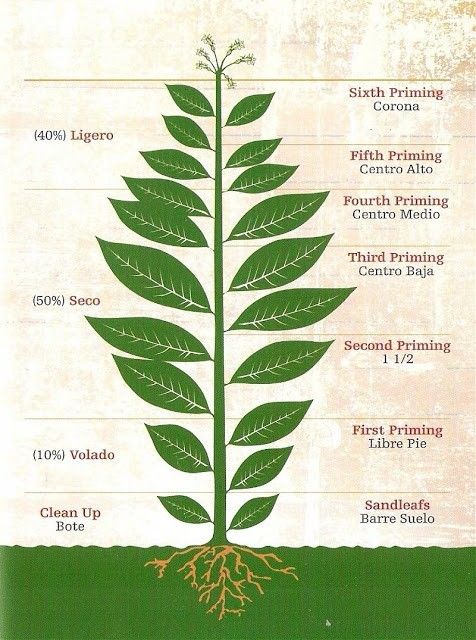In the movie “Sideways,” two men take a trip to California’s wine country. One is an expert on wine while the other is just along for the ride. While the wine expert waxes poetic about the subtle and complex flavors; often mentioning such things as being able to picture the sunshine illuminating the grapes as they grew, the other guy, says, “Yeah, it tastes good.”
Too often it’s easy for your expert tobacconists to remember that the typical cigar smoker doesn’t really want to know about each type of tobacco that’s rolled into a cigar. You just want to know “Does it taste good?”
But, every once in a while, even the most casual consumer wants a peek under the hood to see what’s driving their favorite cigar. This basic cigar tobacco primer is for you…
CIGAR TOBACCO PLANTS ARE COMPLEX
When you get a bag of oranges at the grocery store, you don’t have to put any thought whatsoever into where those oranges grew on the tree they were picked from — an orange is an orange. Cigar tobacco plants are much more complex.
Setting aside the many different varietals of actual tobacco for a moment, the basic plants are all roughly the same in terms of the various tobaccos they produce.
Each tobacco plant has four zones with respect to the type of tobacco it produces; “Clean Up” aka “Trash,” Volado, Seco and Ligero.
Each of these zones produces a totally different final product when it is chosen for blending into a premium cigar depending on their order of harvesting.
HARVESTING
There are three types of harvesting that are used to gather tobacco; Priming, Stalk Cut and Stalk Priming. The Priming method is the most used process. Stalk Cutting is used for a varietal named Broadleaf, where they cut down and collect the whole plant at one time. The Stalk Priming method is a somewhat long-lost old Cuban style harvesting method that really isn’t used anymore.
The typical premium cigar tobacco plant is harvested at six different times throughout its life. These are called Primings. (There “seventh” priming to clear off the trashy “Clean Up” leaves at the bottom of the plant which end up being used in machine made cigars.) They start at the bottom of the plant and, as the tobacco leaves are deemed properly mature, they remove a section of the leaves.
Leaves are judged mature when they:
- lay horizontally on the plant
- have a yellowish center vein
- cut away from the plant “like butter”
The leaves are usually collected two or three at a time roughly a week apart until the plant stalk is stripped.
Unlike the oranges we talked about earlier, which may be picked at different times as they are judged ripe, each priming of tobacco leaves produces a very different end product.
VOLADO
When it comes to flavor and aroma, the Volado tobacco does virtually nothing. Instead, this leaf, found at the bottom of the plant, will have the most burn ability. All cigars (with a few exceptions) need Volado leaves so that they will burn properly and you will be able to enjoy them.
SECO
Seco, comes from the middle part of the tobacco plant. These leaves are of the mild type, so depending on how much Seco is used; it will affect the mild flavor of your cigar.
LIGERO
Ligero, the first type, is made from the leaves at the top of the tobacco plant. These leaves will have the most flavor and will be the most bold. The more of the Ligero included, the stronger the cigar will be.
As you can see, as you move up the plant and closer to the sun, the tobacco rises in strength and flavor.
IT GETS EVEN MORE COMPLEX!
Ok, so one plant produces three basic stacks of tobacco. Now, let’s start mixing in additional variables and it gets mind bogglingly complex!
Tobacco plants in one field might produce different results that tobacco plants just a mile down the road. Then factor in different geographic growing regions within a single country. And, then, multiply that times the number of countries where tobacco is grown and you get literally thousands and thousands of distinctly different tobaccos from which a cigar can be blended.
No wonder there are so many different cigars!
MORE ABOUT CIGARS…
GEOGRAPHICAL TOBACCO CHARACTERISTICS >>>



